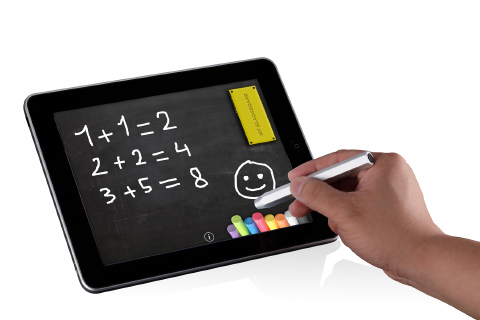Mobile Apps Aren’t Just For Customers!
Customer focussed technology is quickly becoming the norm, but in our excitement for this new-fangled communication method, don't forget you can use it internally with equally impressive results...

We’re constantly reminded of the virtues of implementing a digital strategy, usually this involves a sales and marketing approach, including but not limited to: social networking, online video, an intuitive website, mobile apps and CLM. But with all of this external communication, it’s very easy to overlook one glaringly obvious fact – technology is not just for your customers, but for your staff as well.
I recently spoke to David Churchill, a Senior Product Manager at Amgen Canada, and he is very much of the same mind as me – internally, a digital approach to a challenge can work wonders!
“When I was a sales rep 10 years ago, I arrived home to find 10 boxes of material on my front step after I joined the company with a note, ‘There's your training material, read it over the next two weeks and come in for the test.’”
“I found it a bit of an overwhelming experience; you feel like you should read absolutely every piece of paper and study it like you're studying for an exam. But then like studying for an exam you end up cramming, and after the test is done you forget half of the stuff that you studied.”
The problem David is describing is not an uncommon one, a two minute online search will attest to that. And yet for all our rhetoric on making the customer experience more engaging, more interactive, why is the same knowledge not being applied to our internal practices? This is an issue David sought to solve.
Working closely with the internal Sales Effectiveness team, David sought to develop a training solution for a very specific topic - Non Hodgkin's Lymphoma, and the solution, he decided, was a mobile app.
“The issue that I identified was, when the training is over, it’s over. People are a lot less likely to go back and look at something after the fact. That's why I said to them ‘You know what? If we could take something and make it into an app that resides locally on their iPad, the likelihood of them going back and referring to it will be a lot higher, because the icon will be sitting right there.’”
“I needed them to get a little bit of extra training in, so it was rolled out, prior to our summer meeting. The feedback from the reps was fantastic, because it’s more interactive, you can put voice in, you can have charts, moving objects, and it really made a fairly difficult concept much easier to understand.”
“You're never going to get the uninspired reps to buy into much training, we're not targeting those here, we're actually targeting the best and the most eager and to make them even better. I think for me, the best, most eager reps, are the ones that are going to go back and look at it, refresh their memory from time to time.”
The idea is simple enough, but then good ideas often are. Put all of your reams of paper, all of your pages of web copy, into a downloadable, easy to digest app. Make your app interactive, include graphics/quizzes, anything useful you can and ensure it stays on your reps iPad so it’s always at hand.
Sounds easy right? But as so often happens with well-intentioned ideas, bureaucracy gets in the way, but was this the case with David’s project?
“I think one of the areas that we were challenged a little bit on was exactly how were we going to draw this back into the centralised learning management system? And could we actually have the testing occur on the app itself?”
“The answer to that question, sadly was no, so there was a brief period where it looked like they may say to us that we couldn't develop the app, but what we decided instead was to go ahead - but we put the test itself in the learning management system and this satisfied both parties.”
“Really the challenge was internal policy. Where things haven't been done before it's easy for people to say ‘No you can't do that, you have to stick with the tried and true’ but we felt that the opportunity to learn Non-Hodgkin's better through an app was going to be far greater than sticking with policy, so it just came to lobbying the right people internally to get the sign off to move forward on this.”
It’s the age-old lesson, internal buy-in is key to change, that and a little hard work. The finished product took three months to develop, and involved close collaboration between the Learning & Effectiveness Manager, external developer and David. After all of this innovation and ear-bending, I couldn’t let David leave without asking him one final question, what was the ROI?
“There's an increase in understanding, it's too early to tell regarding the sales, although I believe in my heart of hearts that the sales results will follow because they follow confident conversations with customers, and we had a need for our sales reps to be more confident in their understanding of Non-Hodgkin’s Lymphoma. I can definitely say from the feedback that we've had from the reps, and in terms of the overall formal evaluation that they did of the app - it's all been very positive.”
David Churchill will be presenting his experience as a detailed case study at this year’s Digital Marketing Conference in Canada on 21stand 22ndNovember. You can find out more about David’s presentation as well as the event by visiting the website.
